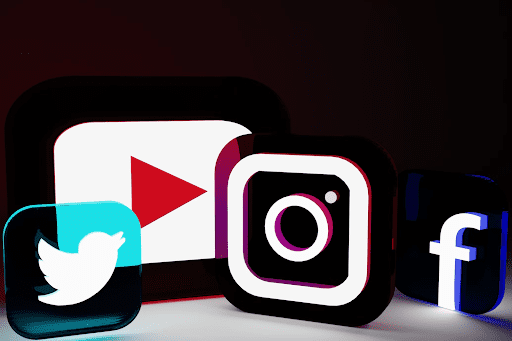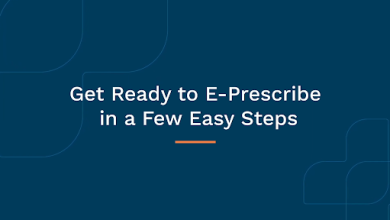Exploring Social Media Tools: A Comprehensive Guide

As social media platforms and strategy grow increasingly pivotal in building brands and engaging audiences, the ecosystem of tools supporting improved productivity, efficiency, and performance management continues expanding, matching rising relevance and dependence on daily operations now placed across these digital channels. This analysis will explore essential categories and use cases guiding optimal social media tool selection fitting needs.
The Importance of Social Media Tools
Well-chosen tools uplift a multitude of functional areas:
Enhancing Productivity: Automation handles high-volume administrative tasks like content scheduling, community management, and engagement documentation, freeing strategists to focus on higher-value priorities and strategy.
Measuring Performance: Robust analytical dashboards centralize key performance indicators on reach, engagement rates, conversions, and sentiments, gauging campaign impact over time – while informing refinements.
Engaging with Audiences: Expand audience reach and deepen relationships through tools simplifying audience identification, targeted content development, and impactful response coordination at a daily scale.
Content Creation Inspiration: AI-powered creative idea suggestion tools deliver impactful messaging angle and format recommendations matching campaign goals, harnessing data – not just guesswork.
Influencer Partnerships: Influencer marketplace solutions connect relevant content creators, manage collaborations and track attributable results delivered through aligned sponsorship initiatives geared to brand objectives.
Optimizing Processes: Consolidate workflow redundancy through tools that standardize team hand-offs, approvals, and task orchestration. Deliver consistency by channeling smarter priorities rather than manually planning and reporting.
As clearly evident, comprehensive toolsets support management tools for social media, creation, and engagement dimensions collectively driving social media success and maturity. Robust stacks help manage media scheduling, community engagement, analytics tracking, and more – enabling brands to improve social productivity, efficiency, and performance through specialized platforms purpose-built, granting enterprises enhanced oversight and unlocking channel growth possibilities once only fractional without proper tooling consolidation available.
Categories of Social Media Tools
Core social media tool types include:
Content Creation Tools: Enabling design invocation for social visuals, videos, ads, and messaging content development, reinforcing brand image consistently by upholding quality and voice. Examples: Canva, Over, Design Wizard
Scheduling and Publishing Tools: Plan content sequencing over time while publishing directly to social platforms, saving administrative efforts and avoiding manual uploads. Examples: Hootsuite, Buffer, Sprout Social
Analytics Tools: Track campaign progress through key performance indicators on engagement, community growth, channel followings, content trends, and detailed traffic insights informing strategy. Examples: Sprout Social, Agorapulse, Sendible
Engagement Tools: Grow community loyalty through tools expediting audience identification, automated warm welcomes, bulk targeted messaging, user-generated content gathering and advocacy rewards redeemals. Examples: Mention, Social Buzz, Walls.io
Influencer Tools: Talent discovery tools, partnership management platforms and affiliate solutions connect relevant social creators towards delivering brand-aligned reach, exposure and secondary content at an accountable scale. Examples: Taggle, CreatorIQ, Upfluence
Robust tool stacks collectively support execution, productivity, and reporting, elevating maturing social media practice beyond manual operation.
Advanced Social Media Tools
Next-level tools unlock enhanced visibility and intelligence:
Social Listening Tools: Monitor brand mentions plus customer sentiment analysis assessing perception traction on emerging topics, product features, campaigns and industry trends surfacing acute or chronic performance opportunities through AI-supported discovery and reporting.
Influencer Marketing Tools: From self-service influencer program management to full-service talent matching, including campaign performance tracking tied to contractual guarantees, specialized solutions allow brands to tap creator partnerships and capture Gen Z audiences at an expansive scale guided by dedicated expertise.
Marketing Automation Tools: Sophisticated workflow rules trigger automated responses and multi-channel follow-ups tailored to site visitor browsing behavior, content downloads and onboarding milestones, personalizing experiences while accelerating sales cycles through coordinated nurture sequences with no manual effort scale.
Competitive Benchmarking: Track competitors’ awareness, reach, and engagement metrics to compare performance headroom possibilities. Assess market positioning through automated data aggregation tools, which dramatically condense manual competitive research timelines.
Channel Planning Tools: Expert systems building optimal social media marketing blueprints specific to business types, target audiences and campaign objectives based on vast proprietary channel performance data determining highest ROI priorities balancing resource constraints.
Employee Advocacy Tools: Mobilize staff to promote brand content personally across employee social networks, massively multiplying credible peer-sourced exposure, engagements, and conversions through gamified participation, incentivizing workflows embedded into productive environments no heavy-handed policies solely achieve.
CRM Integrations: Unite social media response data with existing CRM records through platform interconnections, managing customer journeys holistically across sales, service, marketing, and e-commerce database perspectives centrally without relying on manual contact record amalgamation.
The scope for leveraging cutting-edge innovations to streamline historically manual responsibilities continues expanding rapidly when strategists remain focused on maximizing the latest solution advantages and staying perpetually ahead of the quickening social media progression curve.
Choosing the Right Social Media Tools
The platform evaluation process balances several aspects:
Assessing Needs: Document current workflow constraints, feature wish lists, integrations required and problems hope tools address. This focuses on solution vetting, reversing typical ready-fire-aim purchases lacking objectives.
Evaluating Features: Gauge platform sophistication against market leader benchmark capabilities expected given vertical and budget. Shortlisting avoids overpaying for unused surplus functionalities and unnecessarily securing intended goals presently.
Budget Considerations: Consider true total costs beyond simple monthly licensing spanning implementation, training and integration needs also claiming budget atop core spending weighing value returned back overall. Project long-run TCO smartly.
Scalability Factors: Assess platform uptick limitations that could constrain business assumptions on audience size, content volumes across profiles and consumer data archival duration expectations over growth years ahead also requiring adjustments.
Ease of Adoption: Intuitive user interfaces, extensive onboarding education, and quality technical documentation improve staff onboarding and feature utilization, dramatically accelerating tool ROI realization.
Thoughtfully investigating the factors above expedites confident platform selection, avoids buyer’s remorse after abrupt tool changes that carry unnecessary costs and productivity lags, and ultimately gets teams realigned.
Best Practices for Using Social Media Tools
Tools lift impact when guided deliberately by:
Creating an Editorial Content Calendar: Centralize ideation and crisp content direction across teams guided by tool outputs on momentum opportunities, evergreen refinement or audience research insights.
Monitoring Performance Consistently: Establish rhythms for periodic platform analytics review based on volume sensitivities. More narrow or infrequent postings warrant once-weekly analysis, while high-volume daily schedules require hourly metric monitoring, determining deviations and tackling promptly.
Engaging with Your Audience Actively: Carve out interaction windows daily to acknowledge or assist commenters seeking responses by brand profiles. Prevent perception platforms lack behind-the-scenes humanity consumers know staff somewhere.
Staying Updated on Emerging Trends: New sound formats on TikTok, shifting video durations clicked on YouTube or rising emoji usage year-over-year all represent unique platform data revealing shifting audience consumption behaviors and expectations useful strategists continually track.
Conclusion
As social platforms continue permeating communication channels, redefining modern marketing, media, and commerce – specialized tools bridging capability gaps around creation, automation, and analytics increasingly provide the core component of actualizing social media success, unlocking fuller potential, and catalyzing competitive advantage.
Also Read: Best Tool & Calculators in France
By methodically auditing against needs, judiciously upgrading functionalities on high-impact fronts, and committing adoption of best practices sustaining utilization – brands craft social media foundations built to expand influence as audience behaviors evolve in years ahead continually. The time to lay social media bedrock supporting lasting market leadership is undoubtedly right now. Which tools will you start wielding first on the social frontier?





